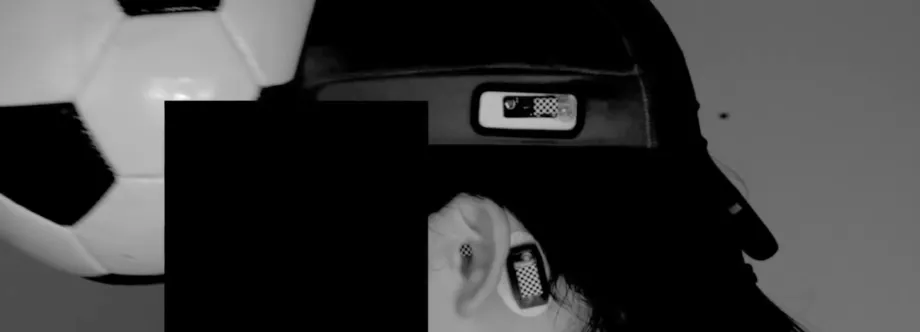
Screenshot from video courtesy Camarillo lab: Stanford researchers used high-speed cameras to record how the subject's head moved during impact, and compared that camera data to measurements produced by concussion sensors.
Stanford Report - August 31st, 2015 - by Bjorn Carey
Amid growing concern over sports-related concussions, some athletes are beginning to wear head-mounted sensors that gauge the speed and force of impacts they sustain during competition. Scientists are still working on identifying baseline parameters for injury, but research suggests that certain skull motions can contribute to concussions, and constant in-game monitoring of those motions promises to help limit injuries.
New research by Stanford bioengineers, however, reveals that many commonly used commercial sensors produce inaccurate data, and that the error-prone measurements make it even more difficult to identify, evaluate and study an injury that is already difficult to quantify.
The results are published online in the journal Annals of Biomedical Engineering.
The researchers, led by David Camarillo, an assistant professor of bioengineering and, by courtesy, of mechanical engineering, looked at three of the leading methods for measuring head impacts: a sensor that adheres to the skin just below the ear, a sensor worn inside a skullcap, and sensors embedded in a mouthguard.
A test subject wore the sensors while heading a soccer ball traveling at speeds roughly equivalent to those observed in youth soccer. The researchers used high-speed cameras to record how the subject's head moved during impact, and compared that camera data to measurements produced by the sensors. (The subject also wore a sensor deep in his ear canal that provided a reference for skull movement.)
The mouthguard – which is used by Stanford's football team – displaced less than 1 millimeter compared to the video measurement, within the estimated error. The skin patch and skull cap sensors, however, fared significantly worse, moving 4 mm and 13 mm, respectively.
The additional movement caused these two devices to overpredict the acceleration of impact by up to 500 percent, an error that could make it difficult to study the cause of injury.
"If these devices over-predicted consistently, say, they were always 50 percent over, then it's probably not a huge issue," said Lyndia Wu, a graduate student in Camarillo's lab and the lead author on the new study. "But the problem is that they don't correlate with skull motion, which makes it difficult to interpret their measurements, and in turn makes it difficult to interpret injury risk predictions."
Too much movement causes false positives
High sensor accelerations measured from the skin/apparel motion might trigger false positive warnings, when in fact no concussion occurred, Camarillo said. False positives are not an unknown to medical technology, and can have widespread consequences. Camarillo cited mammographies and prostate cancer screenings as examples of widely used clinical tests that scientists are only now learning produce many false positives, which steer people to costly and time-consuming medical treatment. Without better sensor equipment and protocols, the same could happen to concussions.
"Across the country, all states have passed some version of concussion legislation that requires medical professionals to evaluate and sign off on child athletes suspected of a concussion," Camarillo said. "You can see how this would cause a problem if there are too many false positives and kids being pulled out of play. A clinical tool to aid in diagnosis needs to be validated for some degree of sensitivity and specificity, but at this stage we need to do the research first."
The researchers found a simple reason for the discrepancies: Skin is flexible, and the momentum of the impact moved the sensor past the point of the actual skull movement. Similarly, the skull cap didn't fit tightly and slid during impact. These two sensors also inaccurately registered the direction of the force, which Camarillo's group has previously found to be an important factor in predicting injury.
The experiment was relatively simple and the impacts were mild compared to actual sports, the researchers acknowledged, but the results should give a general sense of how well the devices perform during blunt head impact scenarios. Although the study looked at only three sensor types, Camarillo said he would expect that any sensor that that isn't securely fitted would provide similarly skewed results.
The researchers expect that the errors associated to soft tissue motion would likely be observed in other sports and at higher speeds, though the magnitude of that error is difficult to predict. They are designing a broader range of tests with human subjects performing a larger range of motions – mounting evidence suggests that measurements made using dummies might not be sufficient – but expect devices attached to teeth or inside the ear canal to perform better than those mounted to tissue or gear.
"My personal opinion is that it would take major effort to mitigate patch/cap issues, since tissue properties may change from person to person and from impact scenario to impact scenario," Wu said. "It is probably an easier route to go with a different mounting location."




